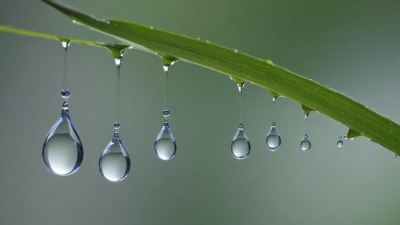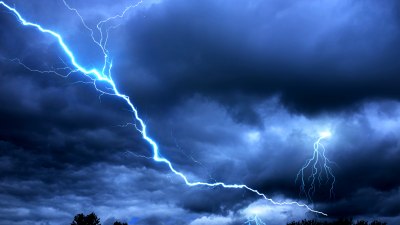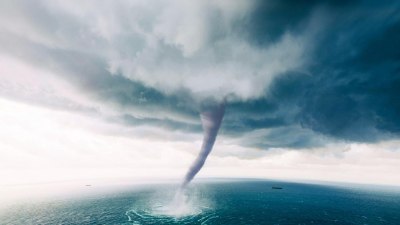The Science Behind Raindrop Size Differences
Explore the fascinating factors that influence raindrop sizes and their impact on weather patterns.

This image was created with the assistance of Freepik
Raindrops come in various sizes and understanding the science behind their differences is crucial for several reasons, including predicting weather patterns and understanding their impact on the environment. The size of raindrops ranges from very small microdroplets to larger droplets that can surpass 6 millimeters in diameter. This article delves into the conditions that affect raindrop sizes, the physics involved in raindrop formation, and how these sizes play a role in meteorology.
The Basics of Raindrop Formation
Raindrops form when water vapor condenses around aerosols in the atmosphere, a process known as nucleation. Initially, numerous tiny droplets form through collision and coalescence, and eventually, these droplets grow larger as more water vapor condenses onto them. The growth of these droplets depends primarily on environmental factors including humidity, temperature, and atmospheric pressure. When these droplets reach a critical size of roughly 0.5 millimeters, they can begin to fall toward the ground.
Factors Influencing Raindrop Size
Several factors influence the size of raindrops, including the intensity of the precipitation, the wind's speed, and atmospheric conditions. For instance, during light rain showers, raindrops tend to be smaller as they form under low intensity and gentle atmospheric conditions. In contrast, heavy rain produces larger droplets due to the disruption of smaller droplets that collide and merge together, thereby gaining mass and increasing size.
The temperature of the cloud base also plays a significant role in determining raindrop size. Warmer air can hold more moisture, which allows for larger droplets to form. Conversely, in cooler conditions, droplets tend to be smaller as the overall moisture availability is limited.
The Impact of Wind on Raindrop Size
Wind is another critical factor that influences raindrop size during its descent. As raindrops fall, they encounter different air currents, which can either increase their size through collision with other droplets or decrease their size through evaporation. Strong winds often lead to a break-up of raindrops into smaller pieces, whereas gentle winds allow larger droplets to maintain their size until they reach the ground.
The Role of Aerosols
Aerosols serve as nucleation points for raindrop formation. The concentration and type of aerosols present in the atmosphere can significantly affect raindrop size. For example, polluted areas with high concentrations of aerosols may experience different raindrop sizes compared to pristine environments. This is due to the fact that particles from pollution can promote the formation of smaller droplets when compared to natural aerosols, such as sea salt which usually leads to larger droplet formation.
Measuring Raindrop Sizes
Raindrop sizes are measured using various methods, including disdrometers, which assess the size distribution and fall velocities of raindrops. These devices use laser technology to detect raindrops as they pass through a beam of light, allowing for precise measurements of their size. Understanding the distribution of raindrop sizes is essential for meteorologists to improve rainfall prediction models and better understand storm dynamics.
Raindrop Size and Weather Patterns
The size of raindrops can significantly impact weather patterns and phenomenon such as flash floods and erosion. Larger raindrops tend to fall more rapidly and can lead to quicker accumulation on the ground, contributing to sudden flash floods. In contrast, smaller raindrops have a longer aerial residence time, which can lead to a slower but steady rain that nourishes plants and groundwater.
The Connection to Climate Change
Climate change also influences raindrop size distribution. As global temperatures rise, the atmosphere's capacity to hold moisture increases, potentially leading to larger raindrops during intense precipitation events. Furthermore, the alteration of wind patterns driven by climate change can also affect raindrop characteristics, leading to new storms and precipitation regimes that further complicate our understanding of weather patterns.
Implications for Agriculture and Water Management
The differences in raindrop sizes have significant implications for agriculture and water resource management. Farmers must consider how rain events affect soil erosion, crop growth, and water absorption rates. Large raindrops can lead to excessive runoff and soil erosion, whereas smaller droplets may maximize water infiltration, thus benefiting crop yields. Understanding the dynamics of raindrop sizes can help in creating effective water management strategies and improving irrigation systems.
The Future of Raindrop Research
Ongoing research into raindrop sizes and their behavior is essential for refining weather forecasting models. Innovations in remote sensing technologies, including drones and satellites, can provide more detailed observations of raindrop sizes and dynamics during rainfall events. These technologies can also help in enhancing our predictive capabilities regarding severe weather, ultimately leading to better preparedness and response strategies.
In conclusion, the science behind raindrop size differences encompasses a complex interplay of meteorological factors and environmental conditions. Understanding these relationships helps in predicting weather patterns, managing water resources, and preparing for the impacts of climate change. By continuing to study raindrop dynamics and their implications, we can improve our understanding of the environment and develop more effective strategies for both agriculture and disaster preparedness.











